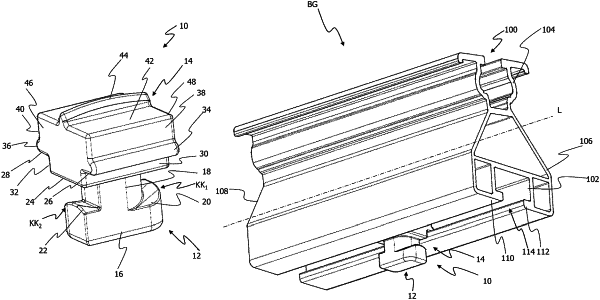| CPC F16B 21/02 (2013.01) [F16B 7/0446 (2013.01); E06B 3/9641 (2013.01); E06B 3/9642 (2013.01); F16B 2/18 (2013.01)] | 20 Claims |

|
1. A connecting element for connecting at least two profile elements, wherein the connecting element is a monobloc, which is rotatable about an axis of rotation in order to produce a clamping force, the connecting element comprising:
at least one first connecting portion and at least one second connecting portion with the axis of rotation extending therebetween, which are each configured to be received in an internal, longitudinal channel of each of the profile elements;
wherein the first connecting portion has at least one first clamping face, wherein the at least one first clamping face is configured with a predetermined clamping contour;
wherein the second connecting portion has at least one second clamping face, wherein the first clamping face faces the second connecting portion and the second clamping face faces the first connecting portion
wherein the first connecting portion and the second connecting portion are disposed at a non-zero angle with respect to each other about the axis of rotation;
wherein rotating the connecting element about the axis of rotation produces the clamping force between the first and second connecting portions and the internal, longitudinal channels of the at least two profile elements; and
wherein the first connecting portion and the second connecting portion are so configured that the profile elements connected by means of the connecting element extend obliquely relative to one another or crosswise.
|